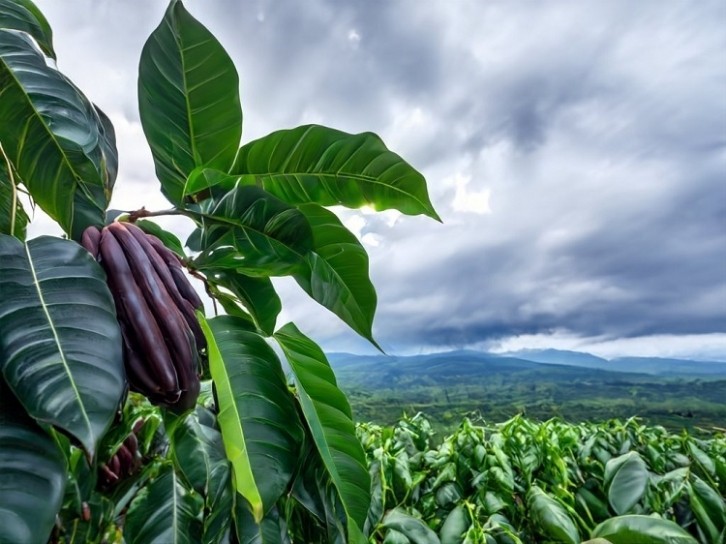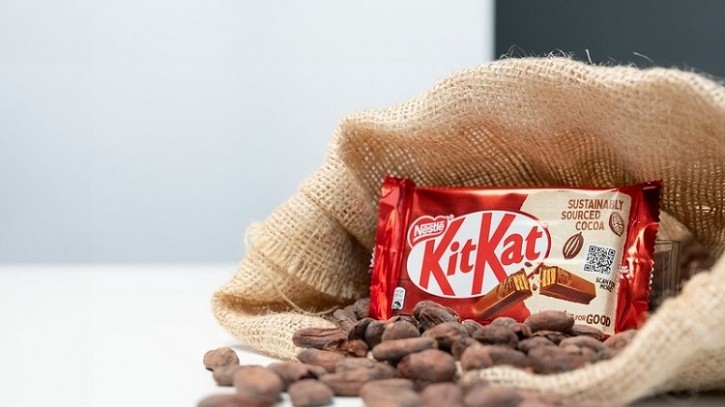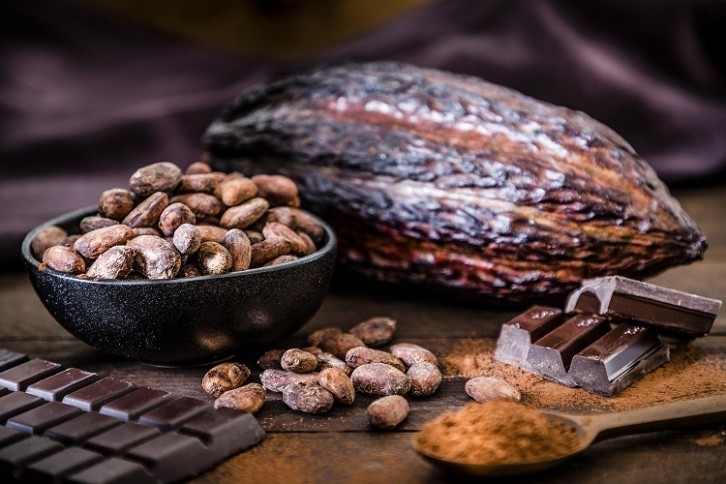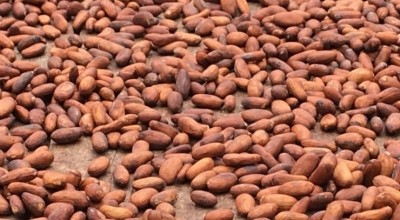Cocoa crisis hits chocolate: Which companies can weather the storm, financially?

The cocoa sector is in crisis. Plagued by crop losses, cocoa is now trading at an eye watering $10,000 (€9,311) a ton, representing a 400% increase compared to last year.
For many confectionery businesses, a price hike of this magnitude is too great to endure – even if passed onto consumers (and some of it already is). Industry insiders are predicting the confectionery sector to reduce in size as manufacturers fold.
On the other hand, companies with larger bank balances will likely weather the storm. “Like so many commodity cost variations, it’s just one more commodity cost variation that we tactically have to deal with,” explained Nestlé CEO Mark Schneider.
Cocoa price sets new records almost daily
Cocoa prices have been on the rise since the beginning of last year. But the last two months have seen new records hit almost daily. What’s causing these price hikes?
Most recently, prices have soared amid concerns that major cocoa plants in Cote d’Ivoire and Ghana can no longer afford to buy beans. The longer-term rise, however, lies in reduced yields for the current 2023/24 season in west Africa, where around 70% of the world’s cocoa is produced.
Digging deeper, the Swollen Shoot Virus (SSV) – spread by insects – is severely damaging cocoa trees. “I heard industry talk about six months ago, right at the beginning of the main crop harvest, that SSV had spread due to the decent levels of rainfall in some growing regions,” revealed Andrew Moriarty, US director of commodity insights at Mintec Global. Isolated outbreaks were present in Cote d’Ivoire, where most of the world’s cocoa is produced. But the spread is ‘perhaps stronger’ in Ghana, he told FoodNavigator.
Even without SSV, it’s suspected production would have been stunted this year due to low farmgate prices and fewer subsidies for fertilisers.
“Most of the market participants I speak to anticipate that 2023/24 production will be at least 10% lower than 2022/23, and most industry estimates I hear are anywhere from 10-15% down.”
Has demand for cocoa been impacted?
Actually not so much, yet. Although ‘grindings’ (a proxy of consumption) have fallen year-on-year since early 2023, retailers and manufacturers report that overall demand remains quite strong.
It’s worth noting that a lot of confectionery retail supply contracts are fixed for extended periods of time – typically 23 months. That means the full impact of increasing cocoa prices has been less noticeable at the retail level, explained Moriarty.
“According to recent discussions, a lot of those contracts came to an end in Q1 2024 and now the full impact of those cocoa increases is finally beginning to hit retail prices, which should result in further demand destruction.”
On the consumer side, demand is also expected to slow as confectionery manufacturers increase prices to help cover costs. Shrinkflation is on the rise and we may start to see confectionery makers promoting products with lower cocoa content.
Easter 2024 offered a prime example of shrinkflation – or ‘chocflation’ – whereby manufacturers reduce the size of their chocolate offerings without lowering the price tag. The Institute of Export and International Trade is reporting that while general food inflation this year is running at over 7%, chocolate is over 30 times higher.
The price of Mondelēz International-owned Cadbury Freddo is up 150% this year, noted the Institute’s director general Marco Forgione. UK consumer watchdog Which? reported the large Mars milk chocolate egg is down from 252g to 201g, yet continues to be sold at £3 (€3.51). Other Mars, Inc. made Easter products to have reduced in size include the Twix milk chocolate Easter egg and the Galaxy Minstrels Easter Egg, noted the watchdog.
Chocolate makers in trouble
Soaring cocoa prices puts chocolate makers in a vulnerable position. Especially considering that manufacturers have kept inventory levels and purchasing low over the past 15 months in anticipation of a downward price correction. This, quite clearly, never came.
Most manufacturers Mintec’s Moriarty speaks to have ‘very little supply covered’ beyond Q2 of this year. That means they’re having to buy at the top of the market, which the commodity insights director stressed further supports those incredibly high price levels.
Smaller chocolate companies are particularly at risk. Given the surge in cocoa prices, chocolate maker James Cadbury says it’s likely up to half of smaller chocolate brands could face closure within the next year.
“For smaller chocolate businesses like ours [John Cadbury’s great-great-great grandson heads up two chocolate brands: Love Cocoa and HIP Chocolate], these cost increases are not just numbers on a page; they are existential threats."
“I fear half of small chocolate companies could face closure due to these daunting economic pressures.”
Cadbury is calling on consumers to buy from smaller chocolate brands. But at the same time, acknowledges that’s just one tool in the toolbox. In the heart of every crisis lies opportunity, he voiced on social media this week.
One of those opportunities lies in innovation – a chance to rethink how brands produce their chocolate. Love Cocoa, for one, has been working on developing a healthier chocolate which uses both less chocolate and sugar.

A number of innovators have also been leaning into cocoa-free chocolate, with the likes of Win-Win, Nukoko, and Foreverland working with different ingredients ranging from carob to barley and faba bean.
Cadbury revealed he had previously disregarded such products due to the poor taste and lack of cost benefits. “With the market as it is, there is now an opportunity for these companies, albeit I’m unsure consumers will understand the concept or taste.”
How big manufacturers will survive…and perhaps even thrive
Price hikes are also being felt by confectionery majors, albeit to a lesser degree. For the Nestlés, Mars, Incs. and Ferreros of this world, bigger bank balances may make weathering the cocoa price storm easier. While they sell more chocolate products than smaller players, many of their offerings contain a lower cocoa content than that of smaller, high cocoa-content brands.
The Hershey Company is another big player in confectionery, with brands ranging from Hershey’s to Reese’s. Given how exposed the company is to variations in cocoa pricing, analysts at TD Cowen have speculated how cocoa inflation might impact its bank balance.
In may be that Hershey not only survives, but thrives, suggest the analysts. If the company announces a price increase in June to cover an increase in cocoa costs (a price increase of say 13%), its operating profit is likely to grow in 2025 at a low-single digit pace. “We are positively disposed to Hershey’s strong management team and its leadership position in the confectionery category, where it has historically demonstrated significant pricing power to offset costs,” they noted.
On the other hand, in a worst-case scenario whereby cocoa prices remain high in late 2024, the analysts estimate Hershey’s operating profit could decline double digits.

Nestlé, which owns household-name brands KitKat, Smarties, Aero and others, reasserted its commitment to the confectionery category during its recent 2023 full-year sales report. The KitKat brand has been performing particularly well for the FMCG major, recording strong growth in all regions.
When Nestlé reported its earnings cocoa prices had already skyrocketed. Now, six weeks later, industry has observed new extremes.
At the time, CEO Schneider suggested product innovation would not be the solution for Nestlé. “What’s important to us is recipes that consumers are tuned into – and whose flavour profile they appreciate and love – that these flavour profiles get fully upheld.
“Tinkering now with the recipes and flavour profiles simply because the input for cost of cocoa has gone up, in my opinion, would be a mistake,” he told press during the press briefing. Consumers should expect to continue to experience the ‘beloved flavours’ they’re used to.
From a financial perspective, Nestlé will weather the storm. This can be helped by tactical marketing opportunities that exist by brand and by market environment, explained the CEO. But ultimately, for a company the size of Nestlé, commodity price variations are par for the course.








